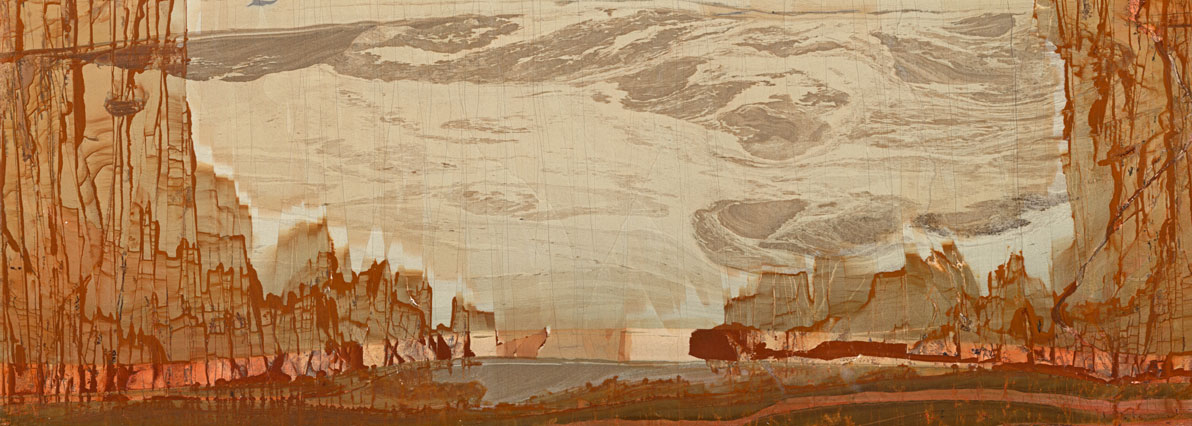Paesina Stone of Florence
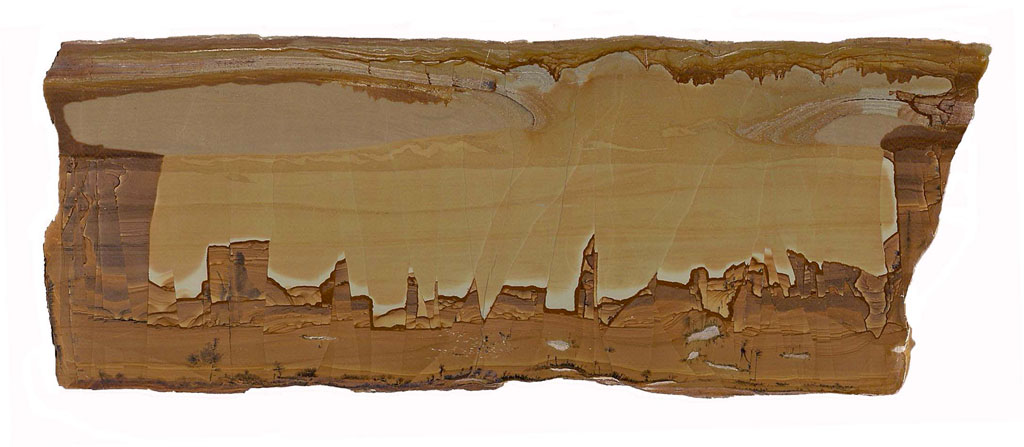
Paesina stone is a variety of Alberese limestone which can be found in all the Northern Apennine mountain areas of Italy. It is the most singular example of "pictorial stone" in the limestone family. Because of the depictions it is able to conjure up and because of its specific origin, it is also called: landscape stone, ruin stone, ruiniform limestone or marble, and Florentine marble.
It is a sedimentary stone mainly made of compressed limestone and clay formed in sea beds about 50 million years ago (Eocene-Paleocene epoch).
The drawings and colours that seem made by a talented painter, are instead absolutely natural; they are produced by the millenary work of mineralized infiltrations in hydroxides of Iron and Manganese.
The origin of its pictorial features is, however, still a matter of debate. According to some scholars these infiltrations gave rise to the chromatic variations, but only subsequent mechanical interaction determined micro-fractures resulting in layer slides that created the final ruiniform aspect. According to others, these micro fractures, composed of spathic calcite, were already present in the limestone and determined the geometric design which affected the infiltration penetration.

Limestone is usually affected by colouring only in peripheral areas and the most intense chromatic alterations seldom reach the internal zones, which with its bluish grey tones evokes images of sky and water.
Externally, the rough stones don't have any particular characteristic that differentiates them from all other "rocks" disseminated across the countryside, therefore only opening them with a cut is possible to reveal the drawings that are hidden inside.
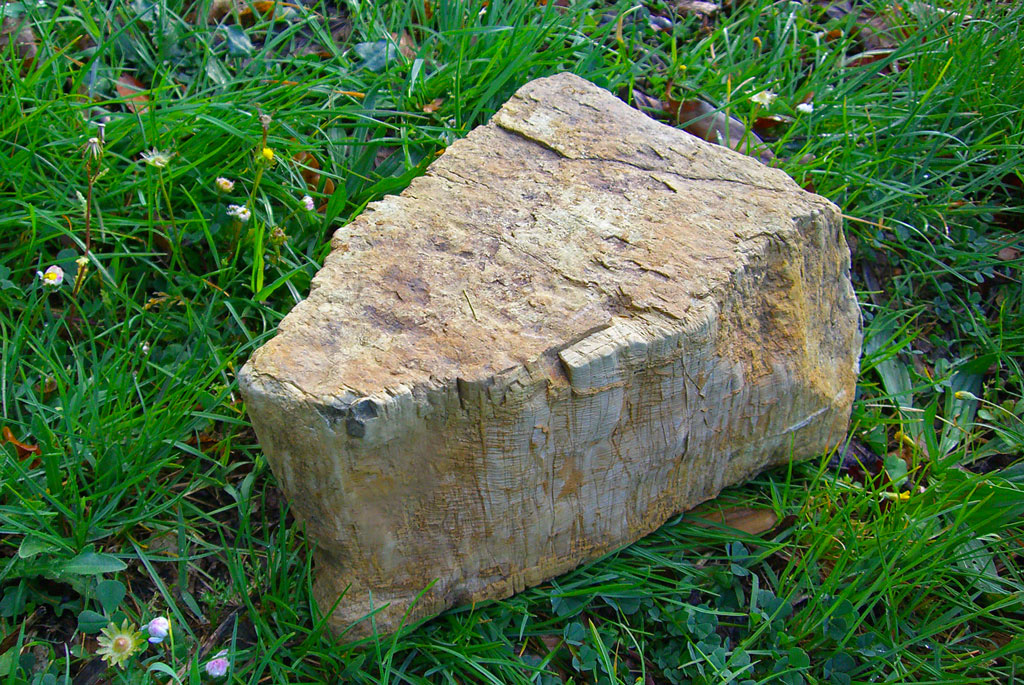
Rough block of Paesina Stone.
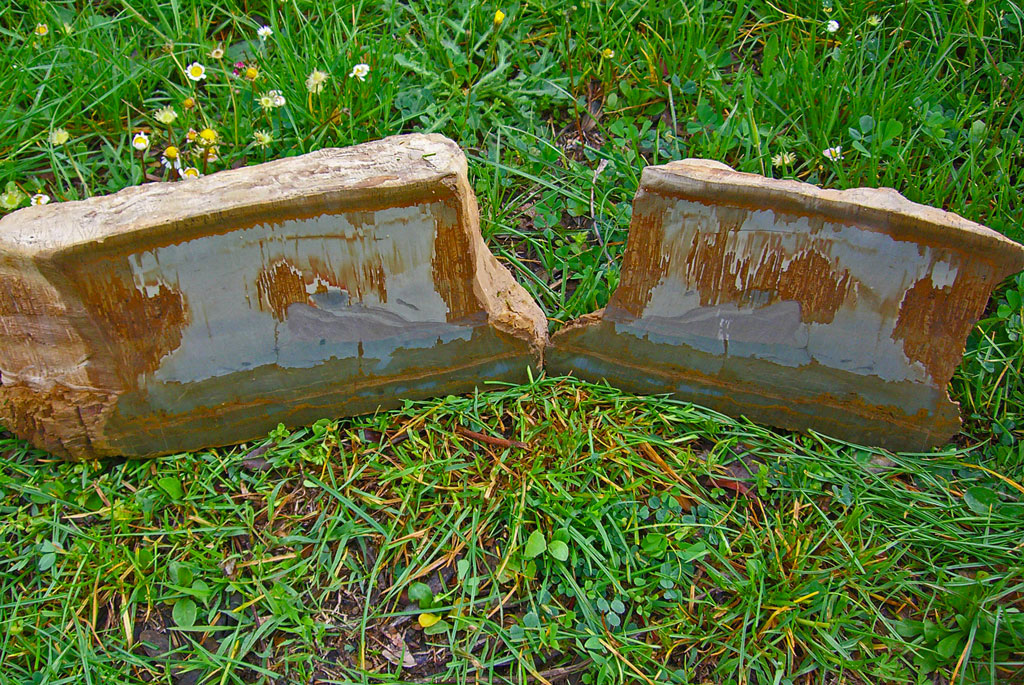
In the block cut in half, typical drawings hidden inside appear.
Only the stones of best quality are cut in thin slabs and subsequantly submitted to polishing.
Contrary to what one might expect, there are no quarries or other places for the extraction, so it is clear that, as in 1500, the discoveries of Paesina Stone are still today completely random and only the result of long and patient research, determining its extreme rarity.
The Paesina Stone, for its unusual drawings and its chromatic variations, until the 16th century was used in Florence in the inlays for furniture, cabinets and other objects of furniture, the decoration of environments and production of furnishings, but was cited only for the first time in 1664 from Athanasius Kircher in the eighth book of the "Mundus Subterraneus", which he described not so much the scientific aspect, but rather the aesthetic. From the 17th century the decorative use of Paesina Stone spread also in France, England and Germany; where it was in fact considered, also for its rarity an ornament among those which were the most precious and therefore very much sought after and in great demand in the Royal courts of the era.

Louis XIV style furniture embellished with small slabs of Paesina Stone and Florentine Mosaic Art Technique
Paesina stone was also used in works realized with the technique of "Commesso" (also known as the Florentine Mosaic Art technique). Florentine art of ancient tradition still in use, consists to build a mosaic using various stones "committed together".

Florentine Art Technique; work of the masters Renzo and Leonardo Scarpelli
Paesina Stone was used by famous painters and engravers as a background for oil paintings, where the landscapes depicted on these stones by nature were completed by the artists who added images, objects and real or mythical creatures.
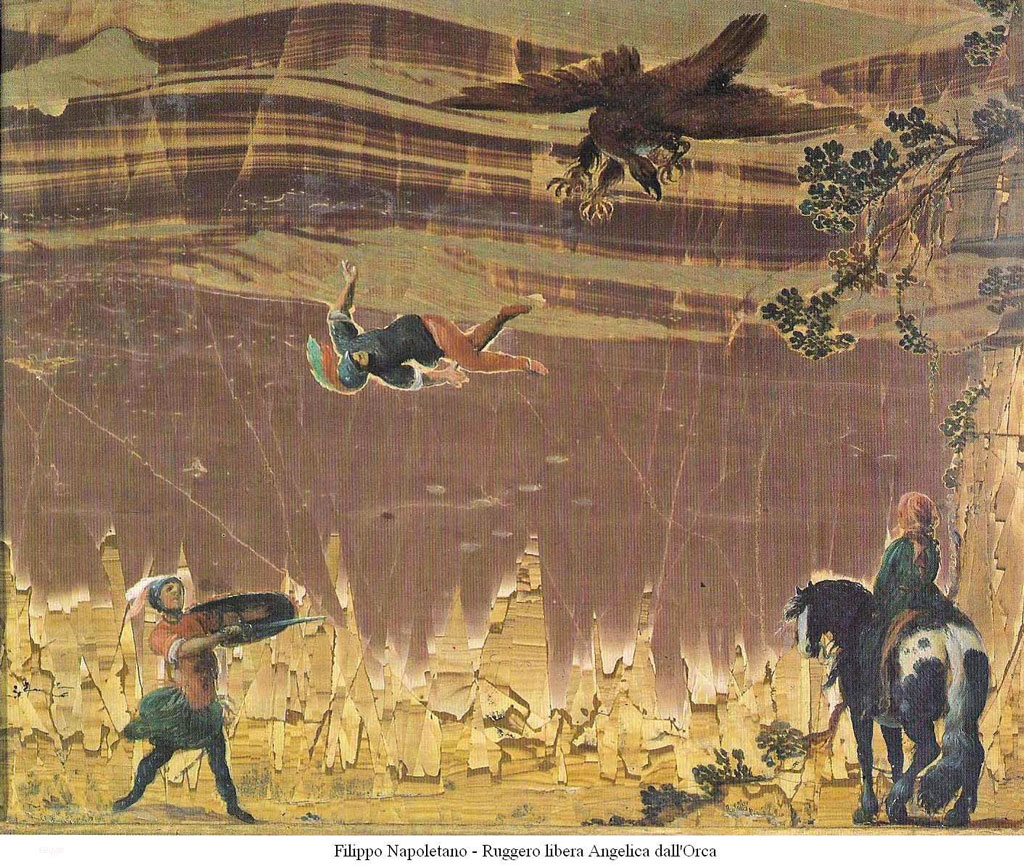
Filippo Napoletano – Ruggero free Angelica from the Orca (years 1617 -1621) – painting on Paesina Stone
Only from the 19th century on did these polished stones begin to be valued as natural paintings.
Among the various forms of Tuscan Paesina Stone deserve to be remember the "Verde d'Arno", in green tones more or less shaded up to light grey, characterized by series of triangles that intersects him among them.
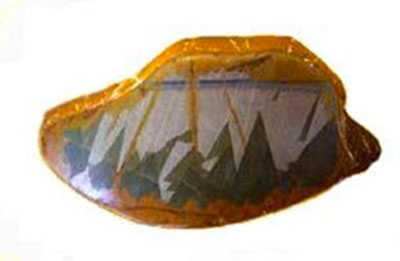
Verde d'Arno
The "Lineato d'Arno" to concentric structure, chromatically shaded toward the nucleus in various yellow-brown tonalities, the "Tigrato d'Arno" (or dendritic stone), marked by a greater frequency of dendrites of Manganese hydroxide
Finally, the "Terra Bruciata di Rimaggio", from us recently recovered; very rare stone of which all trace was lost, but that was well known and used in the 16th century at the time of the Medici family of Florence,characterized by intensely colored parts in yellow and brown with reddish zones, which give the impression of have been subjected to fire, hence its name.
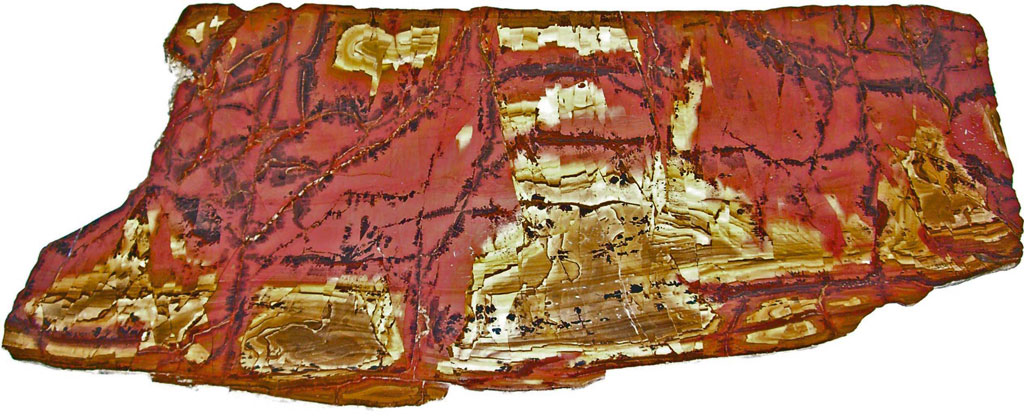
Terra bruciata di Rimaggio
Even if some recoveries were made in other places of Italy, the Paesina Stones originated from the Florentine hills is universally recognized as insuperable for quality and beauty. Stormy seas and islands, canyons, dismantled villages, volcanoes and mountains were depicted by mother nature, remembering tones and colours of Tuscany, like to remind you that in this land that has given the natives to big artists as Leonardo da Vinci, Giotto, even the stones "breathe art".
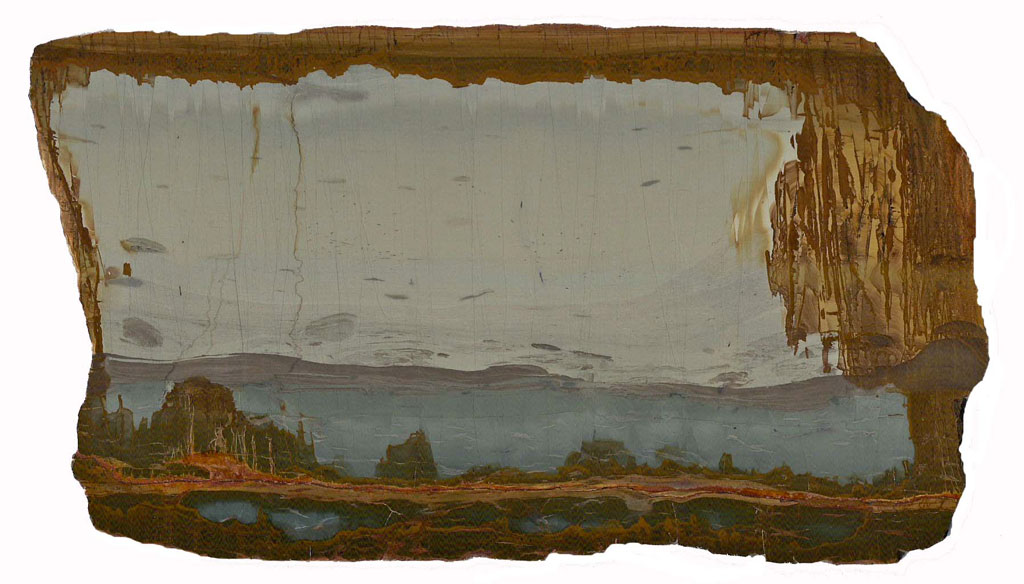
Various examples in antiques manufacturing of this stone, can be admired in Florence in important museums such as: "Opificio delle Pietre Dure" and "Galleria Palatina" in Palazzo Pitti, as well as on the walls of the old Pharmacy in Santa Maria Novella, or in the floor of the church SS. Annunziata.
In Palazzo Vecchio, Medicean Quartieri Monumentali, in particular in the rooms reserved for Eleonora of Toledo, Cosimo I's wife, is preserved a marble table inlaid with some Paesina Stone's slabs whose the central part is the very rare "Terra Bruciata of Rimaggio".
In Siena, inlaying of this stone can be found in the altar of the Cathedral. In the seventeenth-century Cathedral of Colle Val D'Elsa (Si), the Paesina is present in two chapels: the chapel of the SS. Sacramento is decorated with eight oval stones; instead the chapel of the Ascensione is embellished by magnificent great rectangular plates; in any case it's about Paesina Stones of sure and unmistakable Florentine origin.
In Pienza, in Piccolomini palace instead it embellishes an antique wardrobe.

This Florentine precious wardrobe dated 1630, embellished with different tiles and "cabochons" in Paesina Stone was donated to King Gustav Adolph of Sweden.

Enlarged detail of the preceding image
For centuries this stone has aroused curiosity and wonder, and has had many important estimators, particularly the great Florentine family of the Medici.
It was Ferdinando I de' Medici thatfounded in Florence in 1588 the "Opificio delle Pietre Dure" for search and working all semi-precious stones that at that time were known; among these, the Paesina Stone, available exclusively on the hills surrounding the town, constituted an absolute rarity.
The research and working of all these stone materials was also aimed at the creation of very particular mosaics in which the color and veining of various stones have replaced in an impressive way the use of paintbrush. So was born the "Commesso Fiorentino", an art which consisted of creating a mosaic of stones of various kinds and colours, "joined all together" with such technical cleverness and inventive imagination, to form a real pictorial creation. Multiple examples of these Medici masterpieces are exhibited in Florence in the museum Opificio delle Pietre Dure and in the Pitti Palace (Galleria Palatina and the Museo degli Argenti). It' obvious that the color shades and drawings hidden in Paesina Stone lend themselves very well for this purpose, so' promoting wide use in these creations. This art in Florence is still practiced by a small number of craftsmen-artists, veritable "masters".
Then planning to build a magnificent and gigantic altar, entirely inlaid of semi-precious stones for the "Cappelle Medicee", tomb of the Medici family, Ferdinando I commissioned the dominican friar Agostino del Riccio to research and describe all the stones found useful for this purpose in the "Gran Ducato di Toscana", in this way to have the greatest possible variety.
It was so that in his "Istoria delle Pietre" of 1597 Agostino del Riccio, along with a huge number of other stones, he cited special stones collected in the Arno River:
"...in the Arno River many rocks and stones that today can be sawed and polished revealing many fantasies and jests made by Mother Nature...",
perfectly describing the characteristics of the Paesina Stone.
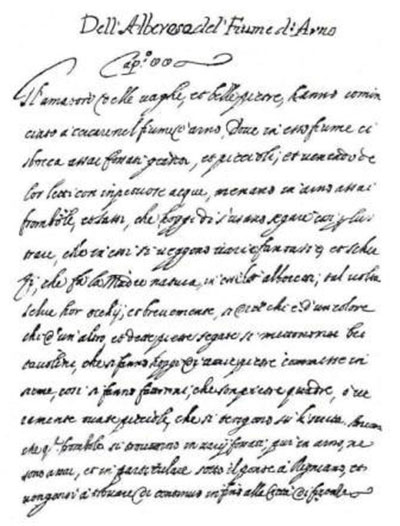
Agostino del Riccio
Istoria delle Pietre
Florence, year 1597
Chap. 88 - Dell'Alberese del Fiume d'Arno
(The original text)
The altar in question unfortunately has remained unfinished, but in many areas there are visible details of Paesina Stone.
Thanks to the contacts that in that epoch the Medici family had with the royal courts of Europe, the Paesina Stone quickly spread everywhere appreciated for its uniqueness and rarity. It is known that the cardinals Richelieu and Mazzarino were greatly appreciated the stone, and created in France the cutters of Paesina, importing rough stones from Florence.
A great contribution to this diffusion was also given by Philipp Hainhofer (1578 – 1647), born in Augsburg in Germany, before student of law at the University of Padua and Siena in Italy, and then became a diplomat very well introduced at the noble and Royal courts of Europe of the time. Great traveller, cultured collector, researcher and merchant of art works, often in Italy, became enamoured of Paesina Stone, with the help of his brother who resided in Florence, starting a business with his native city. He bought the stone in the rough state or inlayed in furnitures, transferring it all to Augsburg. Consider that among his personal "friends" he had Henry IV of France, Duke Wilhelm IV of Bavaria, King Gustavus Adolphus of Sweden.
It is therefore easy to understand why the Paesina Stone even in our time is well known in all the museums of the major cities of northern Europe, not only as a simple example, but also inlayed in furniture and mosaics.
The poet Pablo Neruda, exiled in Europe, around the years 1950/51 he lived for a time in Florence; here was so impressed by the images evoked by the Paesina Stone that he wrote this poem:
Orange stains… of oxide
green veins upon limestone peace
that foam beats with its keys
or dawn with its rose,
this is how these stones are:
nobody knows
if they came from the sea
or if they are returning to the sea,
something surprised them while they were living,
in immobility they passed away
and built a dead city.
A city with no shouts, no kitchens,
a solemn fence… of purity,
pure forms fallen
in disarray with no resurrection,
in a multitude that lost its gaze
in a grey monastery
doomed to the naked truth of its gods.
